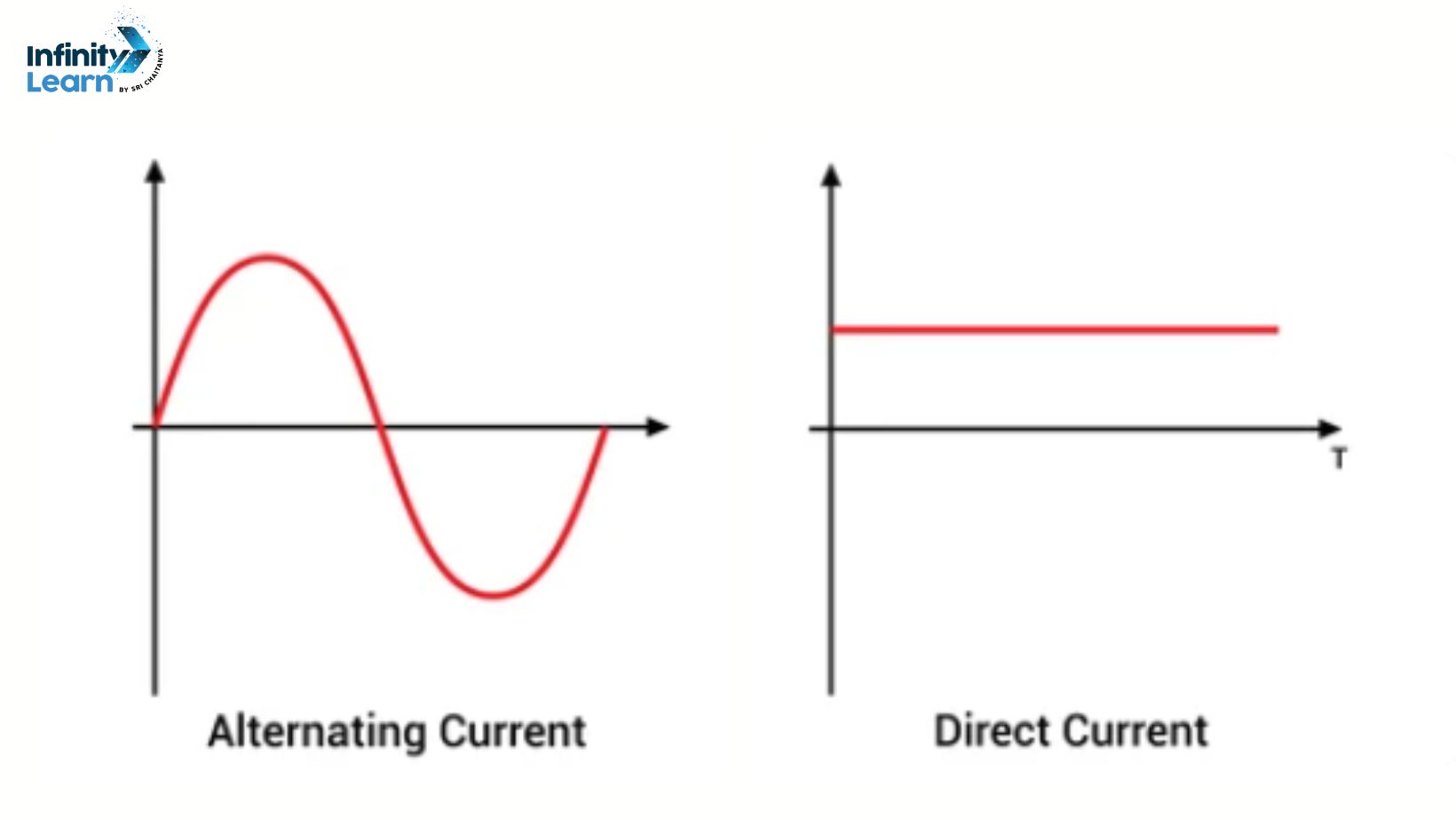Table of Contents
An alternating current (AC) is a type of electrical flow that varies in strength and changes direction regularly over time. Unlike Direct Current (DC), which always flows in one direction, AC reverses its direction periodically.
Also Check: Mind Map

From the chart, we observe that the electrically charged particles in AC begin from a standstill, rise to a peak, and then drop back to zero, marking a positive cycle. Afterwards, they change direction, reach another peak in the opposite way, and then return to the starting point, completing a negative cycle. This cycle repeats regularly.
Additionally, alternating currents often come with changing voltages. Moreover, it’s simple to change alternating current from a high voltage to a lower one.
Mind Map – Download PDF
Application of Alternating Current
Alternating current (AC) is widely used in many devices. Some examples of AC are audio signals and radio signals. AC has an advantage over direct current (DC) because it can carry power over long distances without losing much energy.
AC is commonly used in homes and offices because it’s easier to generate and transport over long distances. AC can also be easily changed to high voltages using transformers. AC can power electric motors, which turn electrical energy into mechanical energy. That’s why AC is used in big appliances like fridges, dishwashers, and other household items.
Physics Mind Maps online to ace your NEET 2024 exam preparation
Alternating Current FAQs
What do you mean by alternating current?
Alternating current (AC) is an electric current that changes direction periodically.
What is the difference between AC and DC current?
AC changes direction periodically, while DC (direct current) flows in one direction continuously.
Why is AC used over DC?
AC is used because it can be easily transformed to higher or lower voltages using transformers, which is more efficient for long-distance power transmission.







